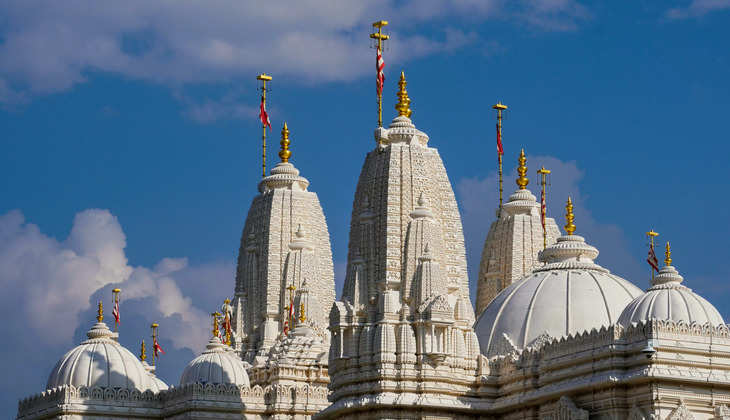Khatu Shyam Mandir History

Khatu Shyam Temple, located in the village of Khatu in the Sikar district of Rajasthan, India, is a revered Hindu temple dedicated to Lord Shyam, also known as Khatu Shyamji or Barbarika. Here is a brief overview of the history of Khatu Shyam Temple:
-
Legend of Barbarika: According to Hindu mythology, Barbarika was a warrior prince and grandson of Bhima, one of the Pandava brothers from the epic Mahabharata. He possessed divine powers and was granted three powerful arrows by Lord Krishna. Barbarika was known for his unwavering devotion to Krishna and his willingness to sacrifice himself for the greater good.
-
Story of Khatu Shyamji: Legend has it that Barbarika expressed his desire to witness the Mahabharata war. Lord Krishna tested his devotion by asking him how many warriors he could single-handedly defeat with his three arrows. Barbarika replied that he could annihilate the entire opposing army with just one arrow. Impressed by his unwavering faith and devotion, Lord Krishna asked him to sacrifice himself before the war began. Barbarika agreed and was decapitated, and his head was buried in the village of Khatu.
-
Discovery of the Idol: Centuries later, a milkman named Shyam Lal discovered the idol of Khatu Shyamji while grazing his cows near the site where Barbarika's head was buried. The idol was found covered in earth and was believed to be self-manifested (Swayambhu). Shyam Lal built a small shrine around the idol, and soon the site became a place of worship for devotees seeking blessings and fulfillment of their wishes.
-
Construction of the Temple: Over time, the shrine of Khatu Shyamji grew in popularity, and devotees began constructing a larger temple complex to accommodate the increasing number of pilgrims. The present-day Khatu Shyam Temple is an architectural marvel adorned with intricate carvings, colorful paintings, and ornate decorations.
-
Religious Significance: Khatu Shyam Temple is considered one of the most important pilgrimage sites in Rajasthan and attracts thousands of devotees, especially during the festivals of Phool Bangla (in February-March) and Shyam Navami (on the birthday of Lord Shyam). Devotees offer prayers, perform rituals, and make offerings of flowers, sweets, and coconuts to seek the blessings of Khatu Shyamji for prosperity, protection, and fulfillment of wishes.
-
Cultural Legacy: The worship of Khatu Shyamji has transcended boundaries and is celebrated by devotees not only in India but also in various parts of the world, particularly among the Rajasthani diaspora. The temple serves as a symbol of faith, devotion, and the enduring legacy of Lord Shyam and his devotee Barbarika.
Overall, the history of Khatu Shyam Temple is intertwined with tales of devotion, miracles, and divine grace, making it a cherished pilgrimage destination for devotees seeking spiritual solace and blessings.
